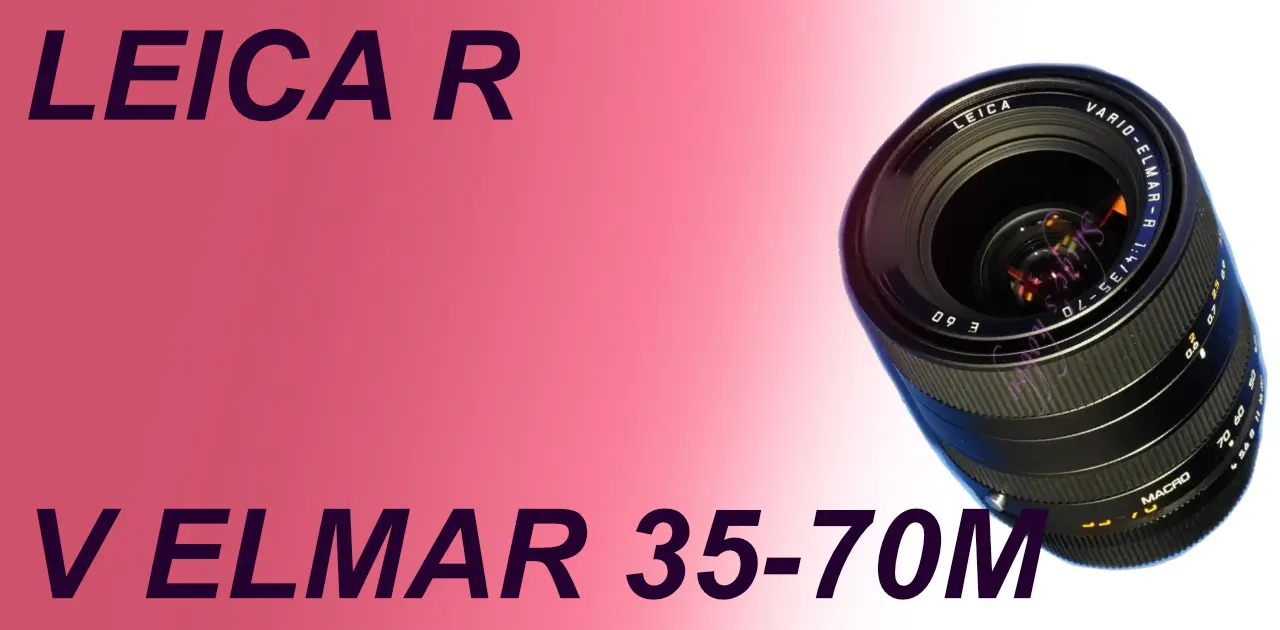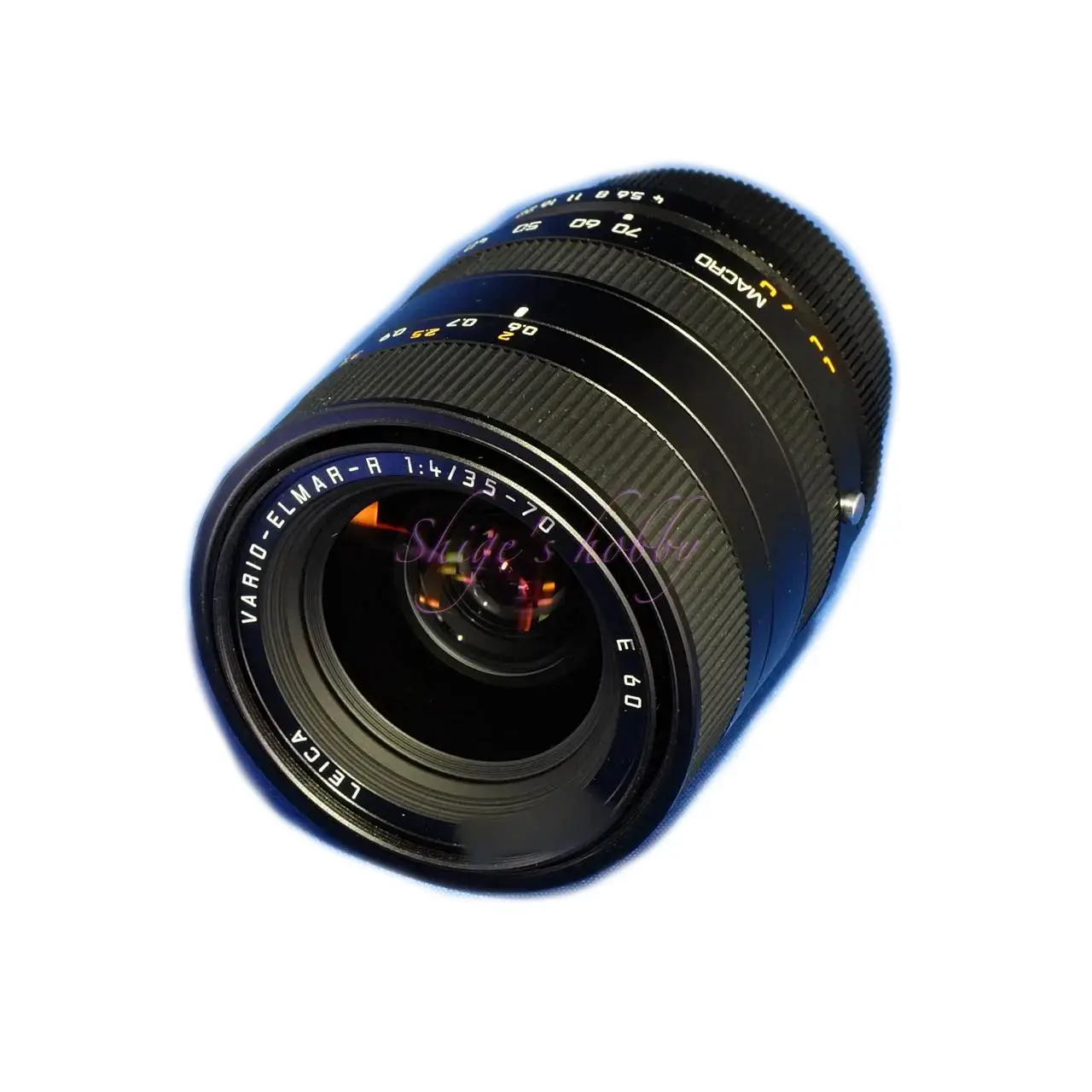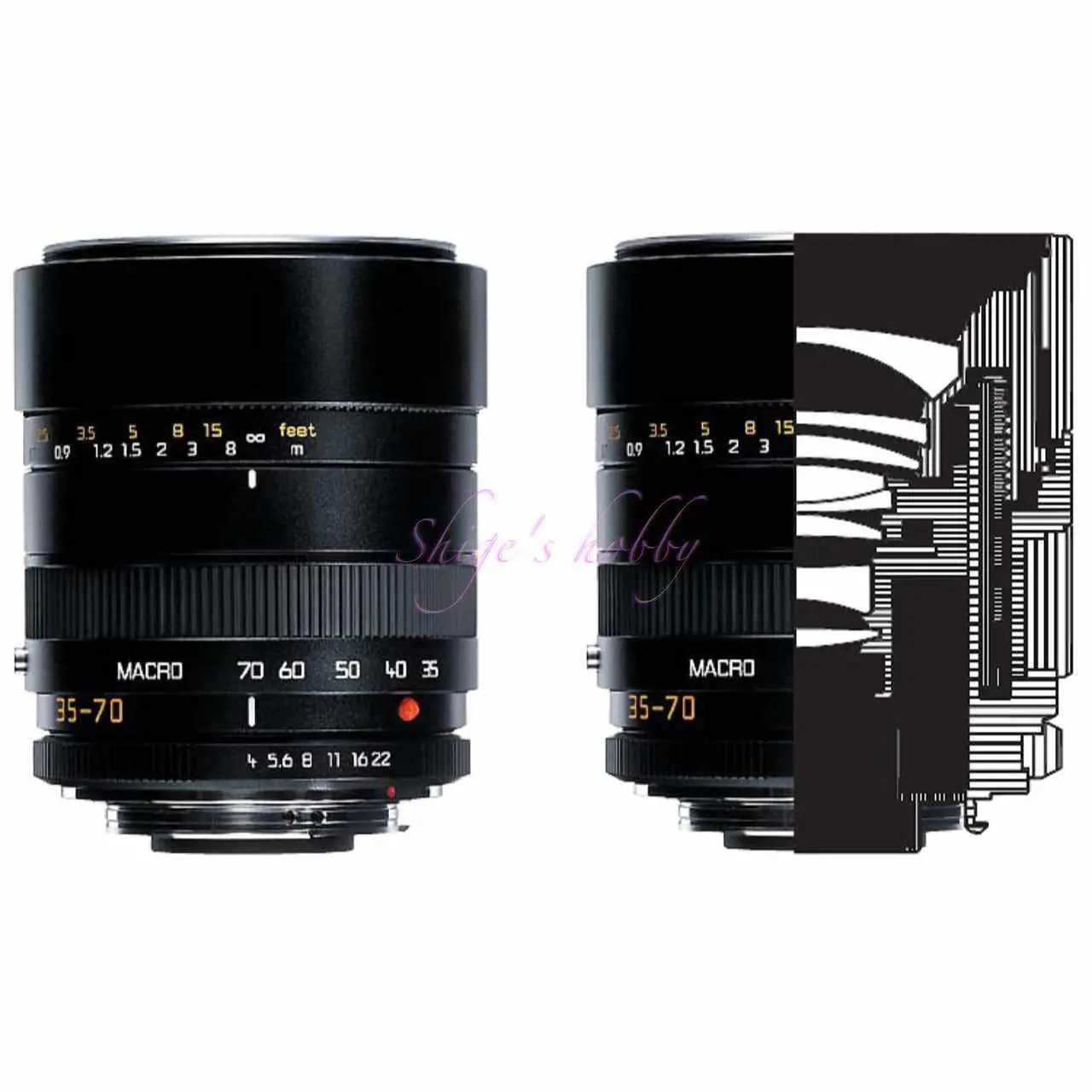Standard zoom with macro V ELMAR 35-70

A review and photo examples of the Vario Elmar 35-70mm F4.
Table of contents
Gallery
- Photo example by LEICA SL typ601
Review


1.Overview
The Leica Vario-Elmar 35-70mm F4 is a zoom lens that covers focal lengths from 35mm to 70mm. It can be considered a renewed version of the F3.5 version that was sold in 1982.
The version with a ROM terminal can control TTL flash with the LEICA R8 and R9. In addition, the DMR (Digital Module R) and the genuine R adapter L + LEICA L digital camera series can record shooting information such as lens name, aperture value, and focal length in exif in addition to flash control.
2.Usage
The feel is excellent, with the zoom ring at the base and the focus ring at the front, and the focus ring, which is important when using manual focus (MF), is located in an easy-to-operate position. The zoom and focus rings on the lens I owned had just the right amount of torque, making them comfortable to use.
When you turn the zoom and focus rings, the lens barrel extends forward, but if you attach the included circular screw-in hood, the position of the lens barrel changes inside the hood, so it looks like an internal zoom.
Without the hood, the lens barrel housing the front element protrudes and looks a little disappointing, so if you are buying one without a hood, it is best to consider whether you can tolerate the appearance before purchasing.
A notable feature of the lens is the macro mode, which allows you to get as close as 0.26m by pressing the macro button and extending the lens barrel.
3.Add info.
This lens is stamped “Made in Japan” and is often said to have been manufactured by Kyocera, just like the VARIO ELMAR 80-200 released at the same time. There are also statements that the design was Leica, but there is no accurate source of information. There is no point in the manufacturer disclosing the fact that the camera is OEM-related, so there is always unconfirmed information scattered in the public.
The previous F3.5 version is thought to be made by Minolta, and Leica’s popular-price zoom lenses are basically made in Japan. This trend has not changed in the 2020s, and many zoom lenses are thought to be made in Japan.
Leica also makes large-aperture zoom lenses in the F2.8 class, but it has released many F4 class zoom lenses made by OEM or contract manufacturing for the general market. Lenses of this class are inexpensive for Leica, and the production numbers suggest that they accounted for a reasonable proportion of sales. It is obvious that selling 10,000 lenses that cost 200,000 yen will generate more sales than selling 400 lenses that cost 1 million yen, and I think this is a lens that gives you a sense of Leica’s history of being tough.
The following is a complete digression, but it is true that it is rude to worry about design and manufacturing, and it is correct to buy the focal length you need for shooting and use it. However, as a personal psychology, I think it is right to be curious about what kind of characteristics it has, since you are paying a certain price for it.
It is impossible for all camera manufacturers to completely design and manufacture their own lenses, and since the 2000s, some Japanese manufacturers have actively used OEMs to fill their lens lines.
What is of concern at such times is when there is a large difference in price, even though the lens is almost the same as the OEM product. If the price is presented at about twice the OEM product at the time of announcement, it discourages the buyer from purchasing. In the case of Leica, it can be three to four times higher, so Japanese manufacturers may be better off in comparison. The selling price is likely determined for a variety of reasons, but the most unfortunate pattern is that because they don’t sell at that price, they are reduced in stores, and then eventually sold off at a loss, and then a short time later, the prices skyrocket on the second-hand market because only a small number were produced.
Specification
| Lens name | VARIO ELMAR | ← | ← |
| Focal length(mm) | 21-35 | 35-70 | 80-200 |
| Max aperture | 3.5-4 | 4 | ← |
| Min aperture | 22 | ← | ← |
| Leaf blade | 6 | ← | ← |
| Lens Construction | 9elements in 8groups | 8elements in 7groups | 12elements in 8groups |
| Min distance(m) | 0.5 | 0.5 (0.26 macro) | 1.1 |
| Lens length(mm) | 66.3 | 79 | 46 |
| Max diameter(mm) | 75 | 74 | 62.5 |
| Filter Size(mm) | 67 | 60 | 60 |
| Weight(g) | 500 | 505 | 1020 |
| Lens hood | Plastic claw hood 12438 | Screw hood 12437 | Build in hood |
| Production number*1 | 3,400(Up to 2005) | 8,680(Up to 2005) | 14,350(Up to 2005) |
| Release date | 2001- | 1996- | 1995- |
- The lens specification paper (paper/PDF) distributed by Leica from which the image was taken has some errors in description, and some descriptions are mixed up with the SIGMA-OEM VARIO ELMAR 28-70.
Reference links
Update
- 2025.1.18
- 2024.03.26
- 2023.11.14
Affiliate links
- Leica Lens・Ads by Amazon
- Leica Books・Ads by Amazon

Leave a Reply